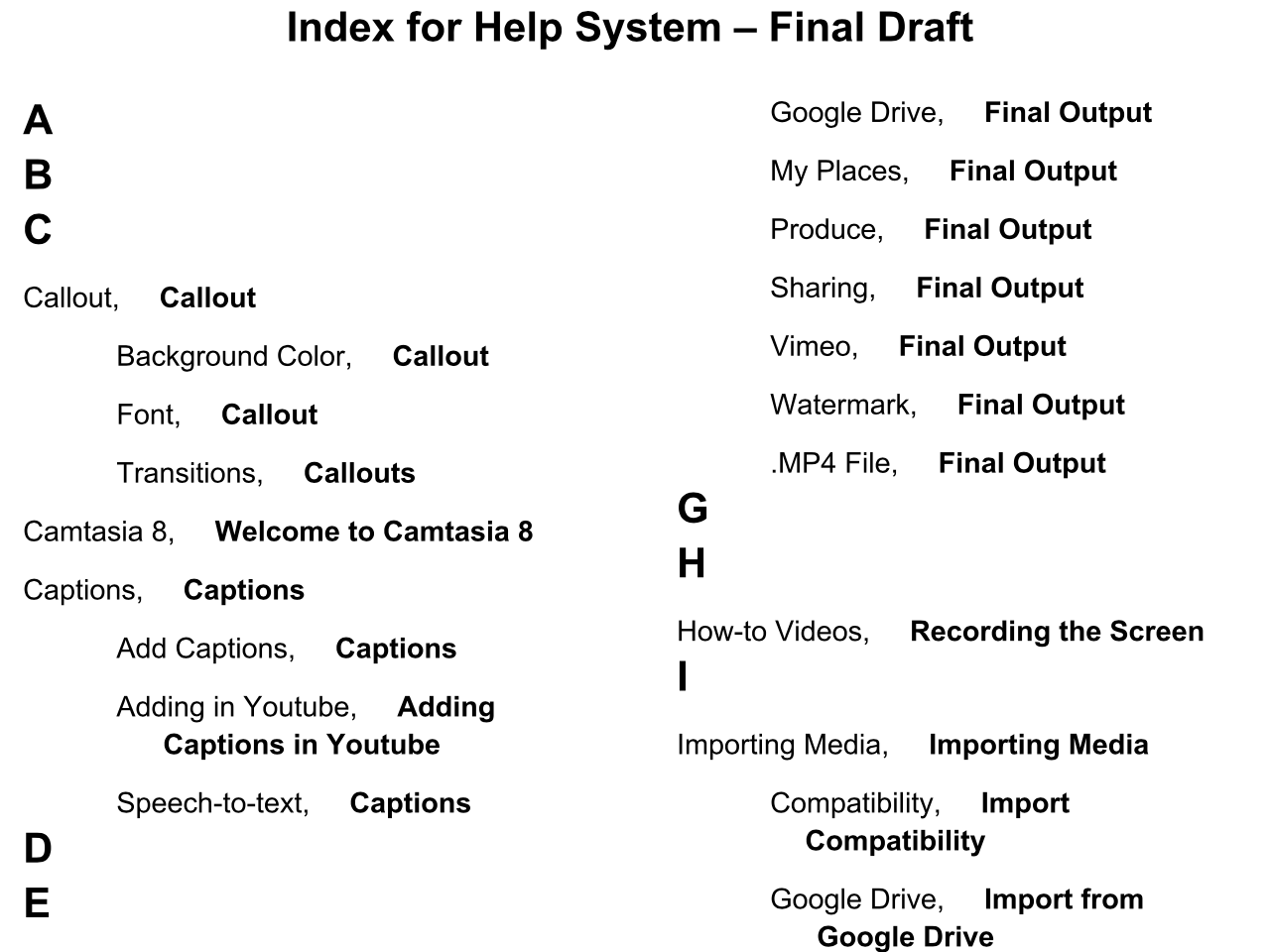
Project Description
For my final indexing project, I selected a Robohelp project I created with a group during the RHET Writing Software Documentation course. This project was a two-part guide for planning, recording, and editing instructional videos. The target audience included UALR instructors that create online instructional content. This guide included how-to content for popular tools such as Adobe Captivate and TechSmith’s Camtasia.
Learning Outcomes
- Analyze and respond to the skimming/reference needs of our audience (guide users) using an index
- Understand and apply major theories behind the profession
- Utilize Robohelp to create and deliver content in a webhelp format
Reflection
This Indexing course was perfect for the Summer term. It wasn’t a condensed 16-week lesson plan but evenly paced. As I invested further in ITSM-related courses, Indexing helped me build on subjects such as Search Engine Optimization (SEO) and strengthen my writing when considering Subject-Matter Expert (SME) or general user searching interests.
This artifact was something I worked on the semester before, so it was fresh on my mind. My goal with this project was to continue building on my Robohelp experience. Since I was so close to the project, there was already a specific group of people in mind when thinking of my audience for this index - instructors creating online videos at UALR.
When selecting terms, I thought about keywords in which users would be interested across various use cases. Although many WYSIWYG tools manage metadata for users, the ability to refine these tags is essential - authors sometimes need to make it right where machines can’t, and sometimes some edge cases are worth addressing. This class backed that leveraging what is available is beneficial if you meet your goals and that there isn’t always a need to compromise (application constraints considered).